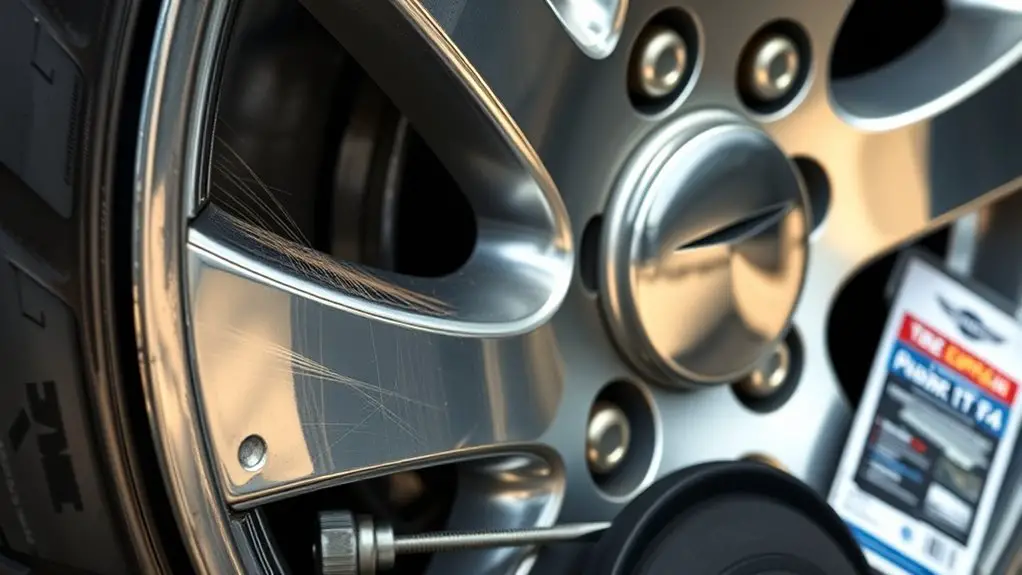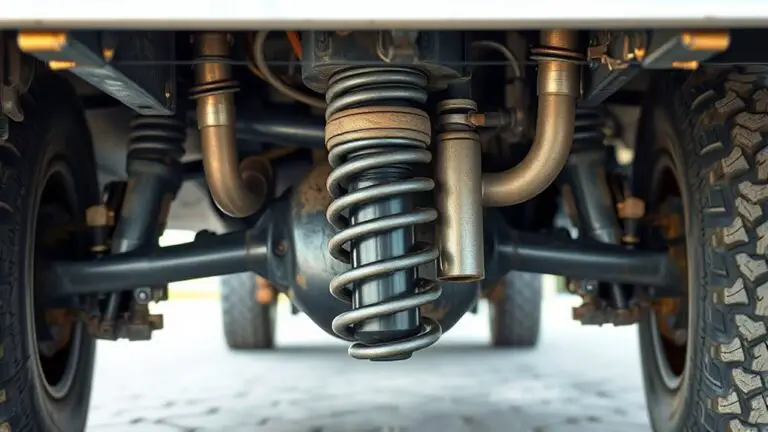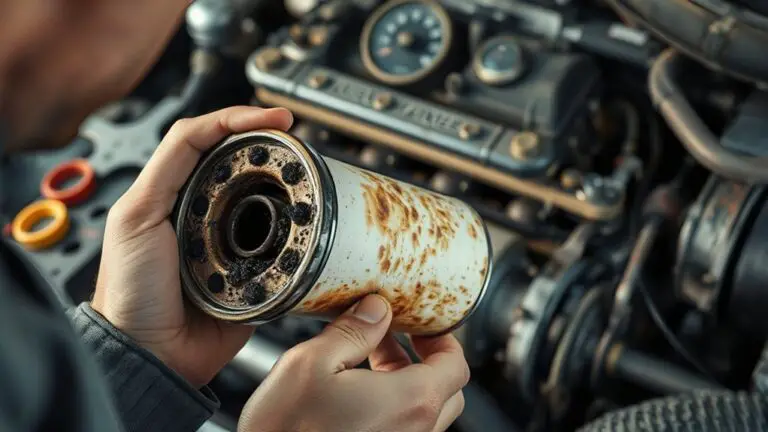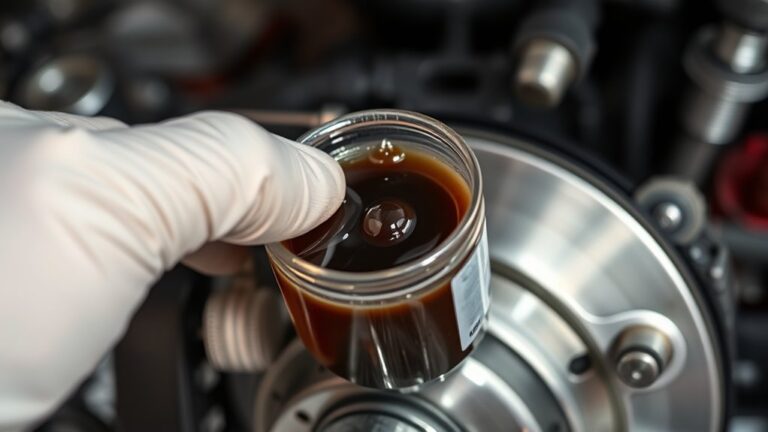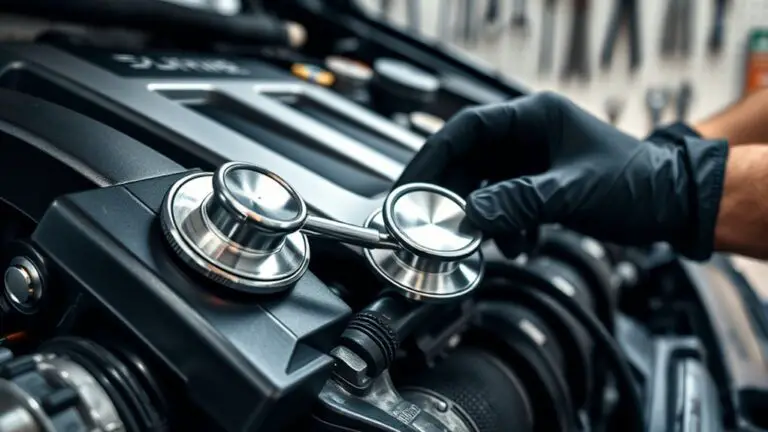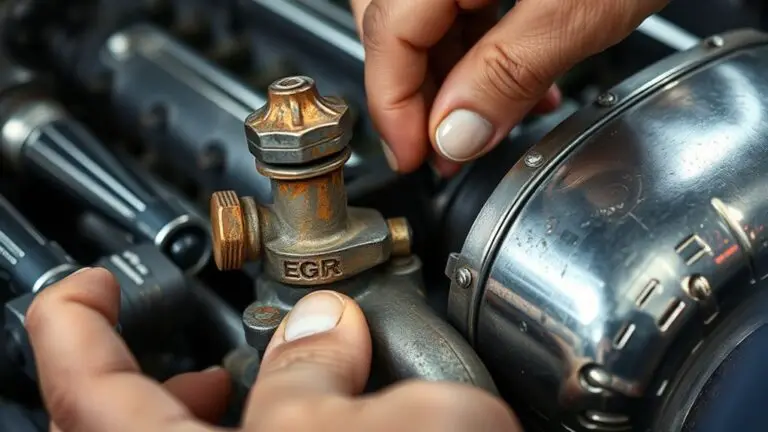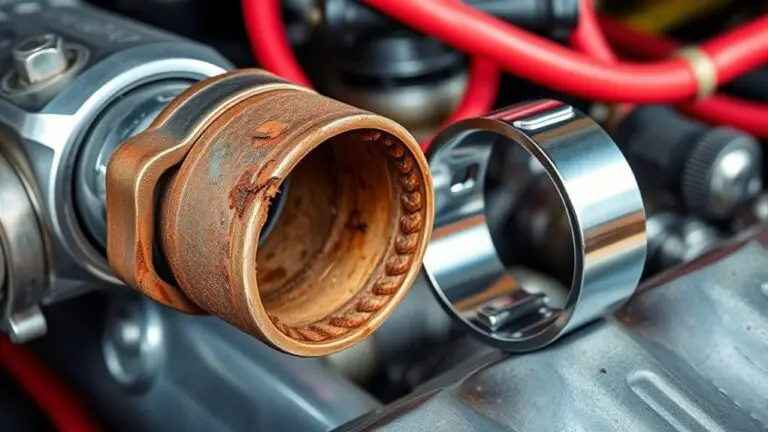When to Replace Vs Repair a Rim
You should replace a rim when its structural integrity or safety margin is beyond repair, and you should repair only when damage stays within tested limits and a certified technician confirms it won’t jeopardize performance. Assess severity quickly: cracks, bends, corrosion, bead-seat integrity, and runout. Consider safety, load, and warranty, then weigh repair costs against replacement. If cracks exceed tolerance or the rim is greatly warped, replacement is wiser. Otherwise a professional repair might be feasible, with careful documentation and testing. More specifics await.
Assessing Rim Damage Severity
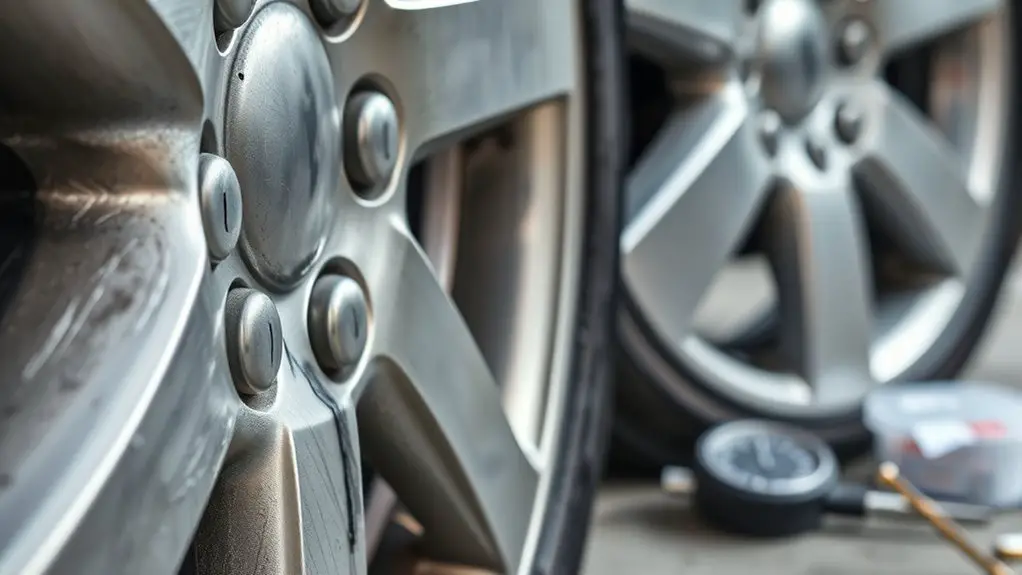
Evaluating rim damage severity requires a careful, structured approach. You’ll start with a visual scan for obvious deformities, cracks, or corrosion, then move to measurable indicators. Rim inspection techniques emphasize symmetry, bead seating, and runout, so you can detect subtle deviations that threaten safety. Prioritize controlled lighting and clean surfaces to avoid false positives. Next, apply damage assessment criteria: assess curvature changes, wall integrity, and any gouges or cuts that compromise material thickness. Document radius deviations with precise gauges or calipers, and compare against manufacturer tolerances. Look for fatigue signs like spoke hole elongation or spider cracks radiating from the bead seat. Consider the rim’s history, impact frequency, and wheel loading to contextualize findings. Differentiate superficial cosmetic flaws from structural compromise, and flag any crack propagation or corrosion undercutting. Record measurements, environmental conditions, and expert opinions for traceability. This approach supports objective decisions about safety, performance, and next steps without premature conclusions about repair versus replacement.
When to Consider Repair Over Replacement
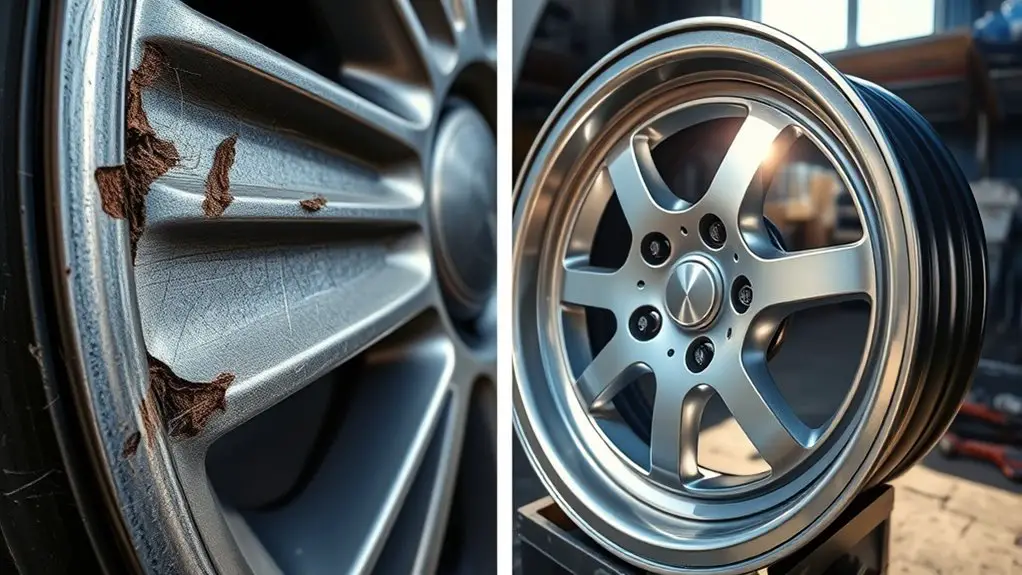
When deciding between repair and replacement, you’ll weigh structural integrity limits to determine if a repair can restore safe performance. Consider how cost vs longevity factors into the equation, since a repair may extend service life but with varying durability compared to a new rim. Also assess safety implications, as maintaining proper geometry and load handling is essential for steady handling and braking performance.
Structural Integrity Limits
Structural integrity limits define when a rim’s deformation, cracks, or hidden damage still allow safe use; if any of these indicators exceed manufacturer thresholds, repair isn’t advisable and replacement should be considered.
You assess material types and load capacity against spec sheets and real-world use. A rim that shows shallow cosmetic flaws may still be serviceable, but deeper corrugations, hairline cracks, or hidden corrosion trigger replacement. Even minor deformations can alter balance, tire seat, and bead seating, risking failure under load. Always defer to manufacturer limits and qualified inspection.
| Column 1 | Column 2 | Column 3 |
|---|---|---|
| material types | load capacity | inspection criteria |
| aluminum alloys | rated load | crack visibility |
| steel | maximum tire load | deformation threshold |
| carbon fiber | safety margin | corrosion signs |
| titanium | service life | stress indicators |
Cost Vs Longevity
Careful cost analysis matters because choosing repair over replacement hinges on both upfront expense and long-term durability. You weigh initial outlay against expected service life, balancing immediate savings with potential repeat fixes. When considering repair, focus on reliability, material compatibility, and the rim’s exposure to stress cycles. Longevity factors include fatigue resistance, corrosion risk, mounting precision, and the likelihood of recurring issues under typical riding conditions. A repair that restores true roundness and exact runout can extend life if the remaining material is sound and the fault isn’t structural. If the cost of repeated repairs approaches or exceeds a replacement, replacement becomes the rational decision. Documented guarantees or manufacturer guidance help lock in predictable performance, reducing future uncertainty while preserving performance margins and cycling freedom.
Safety Implications
Repairing a rim can be appropriate when safety margins aren’t compromised and the fault isn’t structural, but you should proceed only if the repair restores true roundness, concentricity, and adequate wall integrity. Safety implications hinge on maintaining rim safety and controlling repair risks. If you opt for repair, verify alignment, material integrity, and load-capability; any deviation increases failure potential under ride dynamics. Consider brake and tire compatibility, stress distribution, and ongoing inspection cadence. When doubt persists, replacement may be the safer route. Documented testing should confirm residual fatigue limits. Your freedom to choose carries responsibility—prioritize predictable performance over expediency.
| Factor | Action |
|---|---|
| Rim safety | Assess thoroughly |
| Repair risks | Mitigate with testing |
Cracks: Repair or Replace?
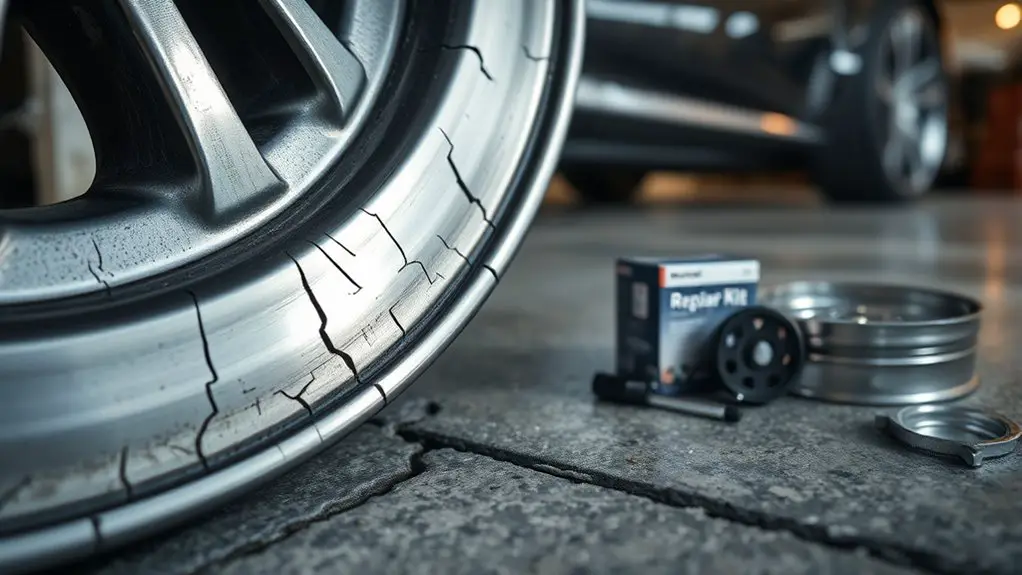
Cracks in a rim require immediate evaluation to determine whether repair is feasible or replacement is necessary. You’ll assess crack types by location, size, and depth, then judge whether the alloy or carbon structure can sustain load without failure. Small, clean radial or circumferential cracks in non-critical areas may respond to targeted repair techniques, but not all cracks are equal. For metal rims, consider welding, cold-stitching, or sleeving only if the crack is isolated and the wheel remains true. Structural integrity hinges on material hardness, alloy composition, and heat-affected zones; improper repair can generate hidden weaknesses. In carbon rims, repairs are rarer and often discouraged due to delamination risk, with replacement usually preferred. Factors guiding your decision include tire bead seating, braking surface condition, and runout. If the crack encroaches on spokes, valve hole vicinity, or a bead seat, replacement becomes the prudent option. Prioritize safety, inspect after any repair, and document the evaluation.
Bent or Warped Rims: What’s Feasible
Bent or warped rims pose a different safety and performance challenge than cracks, and the feasible fixes depend on the severity and location of the deformation. You’ll assess rims by runout, sidewall bulge, and tire bead seating. A small, localized bend in a non-critical area may be corrected with a professional straightening, but only if the material hasn’t fatigued. Warped rim typically means the wheel’s true or lateral runout exceeds acceptable limits, risking vibration, steering pull, and tire bead loss. If the deformation is near the spoke zone or the rim’s flange, repair becomes questionable and replacement matters. You should consider OEM or high-quality aftermarket rims with verified tolerances, rather than low-cost repairs that mask defects. Surface rust, cracks, and hidden internal damage alter feasibility. In many cases, persistent bending or warping indicates compromised integrity and safety trade-offs favor replacement over repair. Prioritize reliable alignment, balanced runout, and verified spec compliance. bent rim or warped rim? Choose repair only when certainty meets safety standards.
Rim Tape and Spoke Tatches: Impact on Repair
Rim tape and spoke tatches can influence repair feasibility by masking underlying damage and signaling structural weaknesses. You’ll assess rim tape quality first, since worn or misaligned tape can hide rim-bed cracks or spoke holes that misrepresent real safety. If tape has tears, folds, or compatibility issues, you risk concealing fatigue that could propagate during a repair. Spoke tension matters just as much: inconsistent tension can reveal asymmetric load paths, complicating true-truing and potentially masking spoke-seat wear. You’ll verify tension with a calibrated gauge and compare to manufacturer specs; deviations suggest partial repair may be temporary or unsafe. In practice, if tape or tatches are compromised, you mix diagnostic clarity with risk, opting for surface fixes only when underlying structure remains solid. When rim tape and spoke tension appear reliable, you pursue measured truing and spoke replacement as needed. Your decision balances restoration benefits against hidden flaws, aiming for predictable ride quality and long-term integrity.
Corrosion and Corrosion-Related Weakness
Corrosion indicators such as pitting, flaking, or haloing around the disc brake area signal potential weakness that can compromise rim integrity. Look for structural weakening signs like wall thinning, burrs, or cracking at spoke holes, which may necessitate closer inspection or replacement. Weigh repair feasibility against limits where corrosion has reached critical depth, material loss, or safety margins, and consider whether replacement is prudent.
Corrosion Indicators
Corrosion indicators signal underlying weakness that can compromise rim integrity. You’ll recognize tells early: pitting, bubbling finishes, and dull or rough spots that deepen with time. These signs point to metal loss beneath the surface and possible fastener starvation if ignored. If you spot tiny rust networks near welds, treat them as warning flags rather than quirks. You’ll want to evaluate not just appearance, but underlying material health and attachment points. Focus on proactive steps that support corrosion prevention and sound maintenance practices.
- Pitting and flaking patterns along spoke holes or bead seats
- Surface discoloration that spreads with cleaning
- Bubbling or blistering under coatings
- Hidden corrosion around welds or rims edges
- Progressive texture changes during routine inspections
Structural Weakening Signs
Even so, structural weakening isn’t limited to visible corrosion. You assess the rim for deeper flaws that reduce load capacity and safety. Structural indicators include thinning walls, pits that extend beyond cosmetic damage, and blisters where metal has degraded beneath paint. Look for uneven wear around spoke holes or bead seats, which signals impaired geometry and stress concentration. Fatigue signs, such as fine, repeating cracking at high-stress regions, point to cyclic loading effects rather than a single impact. Corrosion can hollow out the rim’s interior, diminishing stiffness and increasing failure risk under load. Documented corrosion near valve stems or valve hole edges also matters. If you observe multiple indicators or discovered thinning, treat it as a warning: evaluate replacement versus targeted repair with professional guidance.
Repair Vs Replacement Limits
When corrosion or corrosion-related weaknesses appear, you must weigh repair options against replacement carefully. Limits hinge on material integrity, safety margins, and service life. You’ll assess rim materials and how corrosion affects structural lines, not just surface flaws. If damage penetrates beyond superficial scales or creates stress risers, replacement becomes the prudent path. Otherwise, targeted repair techniques may restore function while preserving weight and cost benefits. Decision criteria include defect size, location, and exposure history, plus wheel load and tire compatibility. Consider long-term reliability, maintenance cadence, and reliability targets. Resist overestimating short-term gains from cosmetic fixes.
- rim materials assessment and compatibility
- defect size, depth, and progression
- exposure history and environmental factors
- impact on safety margins and load rating
- repair techniques feasibility and lifecycle expectations
Wheel Type and Rim Profile Considerations
Wheel type and rim profile determine how a wheel handles loads, fits tires, and resists damage, so you should match the rim material and shape to your riding style and vehicle requirements. Your choice affects stiffness, weight, and ride quality, and it sets expected fatigue life. When selecting wheel types, consider hub compatibility, spoke pattern, and tire clearance, then align rim profile with anticipated loading and braking demands. Rim materials influence thermal behavior, resistance to denting, and overall durability, while rotor and brake surface treatment dictate heat management. For your goals, balance aerodynamics, weight, and stiffness against comfort and cost. Rim aesthetics matter in fit and function: visible machining, finish durability, and color consistency should complement the bike’s lines and components without compromising performance. Use consistent tolerances for runout and trueing, and verify compatibility with tubeless or tubed systems. In short, choose a configuration that preserves integrity under your intended loads and riding conditions.
Safety Thresholds for Clincher Vs Tubular Rims
Clincher rims have explicit load and impact thresholds you should respect, as cutting corners here can compromise sidewall integrity and braking performance. Tubular rims, while often lighter, present different safety limits tied to tire retention and spoke tension, so verify manufacturer specs before any repair decisions. In practice, start by comparing your wheel’s rated safety margins for both rim types and align maintenance plans with those thresholds to prevent sudden failures.
Clincher Rim Thresholds
Clincher rims have explicit safety thresholds that guide whether a wheel should be run as clincher or converted to a tubular setup; these limits hinge on rim bed integrity, spoke tension distribution, and allowable curvature under load.
- rim materials influence fatigue life and ding resistance, shaping acceptable deflection limits
- clincher designs dictate bead seat integrity, curvature tolerance, and seal retention under pressure
- impact history informs allowable rim bend and repair viability without compromising safety
- spoke tension balance and cross-sectional stiffness affect load sharing and threshold exceedance
- inspection cadence determines when measurable wear crosses a critical safety margin
In practice, you compare observed wear, material data, and design specs to decide recoverability versus replacement.
Tubular Rim Safety Limits
From here, tubular rims impose different safety thresholds than clinchers, particularly around bead seating, rim bed integrity, and curvature under load. You’ll assess tubular rim types by strict rim safety standards, which define allowable denting, flat spots, and edge conditions before ride risk rises. Tubular designs distribute forces along the spoke bed differently, demanding rigorous inspection of the bead seat and sidewall shift with precise tolerances. If you detect micro-cracks or flaking epoxy beneath the tape, treat it as a failure cue, not a cosmetic issue. Compare measurements against manufacturer charts, not hearsay. In performance contexts, know that safety margins vary by rim type and tolerance class, and adherence to rim safety standards governs replacement timing rather than impulse or aesthetics.
Cost-Benefit Analysis of Rim Repair
Evaluating rim repair worthiness hinges on a straightforward cost-benefit view: compare the repair costs and potential performance or safety gains against the option of replacing the rim. You’ll weigh repair techniques against the cost evaluation, looking for durable, repeatable results without compromising structural integrity or vehicle handling. Precision decisions hinge on material, fatigue state, and load cycles, not just cosmetic fixes.
- Assess material compatibility and repair technique limits
- Quantify labor, parts, and downtime versus replacement cost
- Estimate residual life post-repair and expected performance
- Consider safety margins under typical riding conditions
- Factor warranty, insurance, and resale implications
A disciplined approach keeps you in control: if gains exceed costs with acceptable risk, repair makes sense; otherwise, replacement preserves reliability and peace of mind. This balance supports freedom to choose based on data, not fear, while preserving performance and safety standards.
When to Seek Professional Evaluation
When you’re deciding whether to repair or replace, knowing when to seek professional evaluation matters. A professional assessment provides an objective baseline before costly decisions. You should seek evaluation if you notice persistent vibration, unusual steering pull, or sudden loss of tire pressure that isn’t explained by tire leaks. Rim integrity checks are essential after impacts from potholes or curb strikes, even if visible damage seems minor. A rim evaluation typically includes magnetic or optical inspection, measurement of runout, and assessment of spoke or bead-seat integrity. If cracks are found, or if bending exceeds manufacturer tolerances, repair may be unsafe or non-viable. In some cases, corrosion or heat damage from braking demands replacement to preserve safety margins. Seek evaluation promptly after any doubt arises, and rely on certified technicians with rim-specific testing capabilities. Collect maintenance history and recent impacts to support the assessment and guarantee you’re choosing a durable, safe outcome.
Frequently Asked Questions
How Long Does a Rim Repair Typically Last?
A 70-word answer, using a second person point of view, contractions, and following these rules: a rim repair typically lasts months to a few years depending on impact history, driving conditions, and maintenance. You’ll see wear sooner if you ride aggressively or on rough roads. Rim durability factors include material, spoke tension, and alignment. Repair longevity expectations vary, but ongoing inspections are essential; if cracking or corrosion appears, replacement is warranted. Handle it with proactive care and freedom.
Can a Repaired Rim Pass Safety Inspections?
Yes, a repaired rim can pass safety inspections if it meets rim inspection standards and repair durability factors. You’ll need a certified repair, proper alloy material handling, and precise alignment. Inspectors focus on crack propagation, wall integrity, and bead seating. If the repair compromises any critical dimension or shows re-cracking, you’ll fail. To stay compliant, document the repair method, materials, and durability tests, then recheck under the same standards before inspection.
Are Aftermarket Rims More Cost-Effective Long-Term?
Are aftermarket rims more cost-effective long-term? Yes, with caveats. You’ll typically pay more upfront, but aftermarket advantages often include lower maintenance costs, wider selection, and easier replacements. Over the long term, savings come from durable materials, broader compatibility, and resale value. If you prioritize customization and fit, you may achieve net long term savings despite higher initial expense. Consider total ownership costs, including wear, tire life, and potential warranty coverage, to gauge true value.
Does Tire Type Affect Repair Viability?
Yes, tire type does affect repair viability. You’ll find tire construction and the chosen repair methods influence whether a patch, plug, or belt repair is appropriate. Some tires aren’t repairable after certain damage types or depths, and you may need a replacement. You’ll want to assess construction details, speed rating, and load limits to determine feasible repairs, ensuring safety and performance while respecting manufacturer guidance.
What Warranty Covers Rim Repairs?
A warranty for rim repairs varies by manufacturer and policy, so you’ll want to check your specific terms. Generally, warranty terms cover defects in workmanship or material, not damage from road hazards. Repair limitations may apply, such as limits on the number of repairs or exclusions for structural compromise. You should document damage, obtain professional assessment, and review the fine print to confirm coverage, exclusions, and claim steps.

